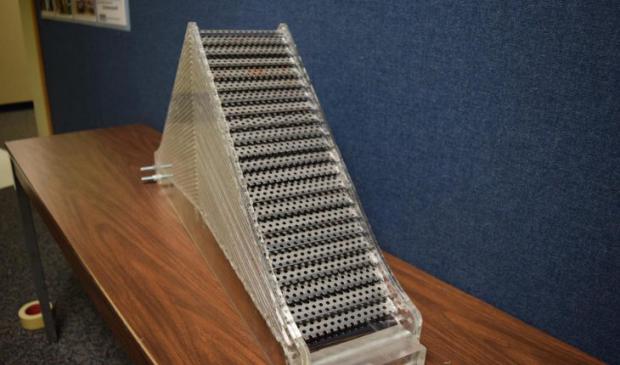
Breaking News
 In my new documentary, Never in America, we pull back the curtain on one of the darkest corners...
In my new documentary, Never in America, we pull back the curtain on one of the darkest corners...
 I just watched what they did to the King family in Washington, and I couldn't stop thinking:
I just watched what they did to the King family in Washington, and I couldn't stop thinking:
 The Superfood They Turned Into a Weed: Why Is It Illegal to Grow This?
The Superfood They Turned Into a Weed: Why Is It Illegal to Grow This?
 Rep. Marjorie Taylor Greene details ''death threats directly fueled by President Trump'
Rep. Marjorie Taylor Greene details ''death threats directly fueled by President Trump'
Top Tech News
 Build a Greenhouse HEATER that Lasts 10-15 DAYS!
Build a Greenhouse HEATER that Lasts 10-15 DAYS!
 Look at the genius idea he came up with using this tank that nobody wanted
Look at the genius idea he came up with using this tank that nobody wanted
 Latest Comet 3I Atlas Anomolies Like the Impossible 600,000 Mile Long Sunward Tail
Latest Comet 3I Atlas Anomolies Like the Impossible 600,000 Mile Long Sunward Tail
 Tesla Just Opened Its Biggest Supercharger Station Ever--And It's Powered By Solar And Batteries
Tesla Just Opened Its Biggest Supercharger Station Ever--And It's Powered By Solar And Batteries
 Your body already knows how to regrow limbs. We just haven't figured out how to turn it on yet.
Your body already knows how to regrow limbs. We just haven't figured out how to turn it on yet.
 We've wiretapped the gut-brain hotline to decode signals driving disease
We've wiretapped the gut-brain hotline to decode signals driving disease
 3D-printable concrete alternative hardens in three days, not four weeks
3D-printable concrete alternative hardens in three days, not four weeks
 Could satellite-beaming planes and airships make SpaceX's Starlink obsolete?
Could satellite-beaming planes and airships make SpaceX's Starlink obsolete?
Metamaterial to bend sound around large objects could open up many other cloaking applications

During the 175th Meeting of the Acoustical Society of America, being held May 7-11, 2018, in Minneapolis, Minnesota, Hanford will describe the physics behind an underwater acoustic shield designed in her lab.
Above – Scientists are now working to take cloaking devices from the dramatic realm of science fiction and make them real. Amanda D. Hanford, at Pennsylvania State University, is taking the introductory steps to make acoustic ground cloaks. These materials redirect approaching waves around an object without scattering the wave energy, concealing the object from the sound waves. During the 175th ASA Meeting, Hanford will describe the physics behind an underwater acoustic shield designed in her lab. This image is a Profile picture of the assembled perforated plate ground cloak. CREDIT Peter Kerrian
Hanford and her team set out to engineer a metamaterial that can allow the sound waves to bend around the object as if it were not there. Metamaterials commonly exhibit extraordinary properties not found in nature, like negative density. To work, the unit cell — the smallest component of the metamaterial — must be smaller than the acoustic wavelength in the study.
"These materials sound like a totally abstract concept, but the math is showing us that these properties are possible," Hanford said. "So, we are working to open the floodgates to see what we can create with these materials."
To date, most acoustic metamaterials have been designed to deflect sound waves in air. Hanford decided to take this work one step further and accept the scientific challenge of trying the same feat underwater. Acoustic cloaking underwater is more complicated because water is denser and less compressible than air. These factors limit engineering options.
After multiple attempts, the team designed a 3-foot-tall pyramid out of perforated steel plates. They then placed the structure on the floor of a large underwater research tank. Inside the tank, a source hydrophone produced acoustic waves between 7,000 Hz and 12,000 Hz, and several receiver hydrophones around the tank monitored reflected acoustic waves.
The wave reflected from the metamaterial matched the phase of the reflected wave from the surface. Additionally, the amplitude of the reflected wave from the cloaked object decreased slightly. These results demonstrate that this material could make an object appear invisible to underwater instruments like sonar.

 First totally synthetic human brain model has been realized
First totally synthetic human brain model has been realized Mach-23 potato gun to shoot satellites into space
Mach-23 potato gun to shoot satellites into space

